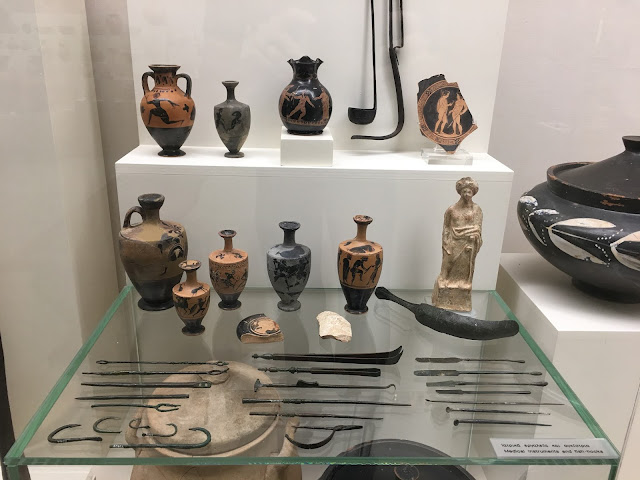One of the interesting aspects of our tour of the ancient 'Minoan' city of Knossos (in modern Heraklion) was the guide's repeated comment, "We often do not know where history ends and myth begins here." Many aspects of this site are reminiscent of the Greek myths that one can still read, such as the story of the Minotaur or Daedalus & Icarus. In some areas, these myths seem to be correlated to historical events; while in other ways they are clearly fictional.
 |
| Rooms within the Palace of Knossos |
This island, which we call Crete, was called Caphtor (Deuteronomy 2:23; Jeremiah 47:4; Amos 9:7) before gaining its modern name (Acts 2:11; chapter 27; Titus 1:5, 12). However, in this earliest of known advanced European civilizations, the people's own name for themselves is uncertain - thus my quotation marks around the name of 'Minoans.' Apparently the Minoans are called this because it was their king(s)' name/title.
 |
| View from the Palace to the mountain from where water was brought by aqueducts |
The palace complex is huge, especially considering the time and the place, more than 3500 years ago. Apparently, some scholars think that the palace itself was 'the labyrinth' in the story of the minotaur.
 |
| The replicas of the paintings that are still displayed are impressive. (Originals are in a covered museum.) |
 |
| Entry to "the Throne Room" |
 |
| Inside the Throne Room; the throne is on the right with a bowl for washing in the center |
 |
| Pictures within the throne room |
 |
| Ancient sewer system that still works, although it's covered with a modern grating |
 |
| Notes about the Hall of the Double Axes |
 |
| Dolphin mural in the queen's room |
 |
| Reconstructed wall with bull relief |
Did you know that bull-leaping is a thing? Apparently one of the major sports of ancient Crete (and the succeeding Mycenaean culture) was leaping over a bull acrobatically, hands to the horns, back flip or hand spring off the back! Look it up online, the remaining figurines and drawings and such like are impressive.
 |
| Another side of the palace |
 |
| 180-degree view to give a sense of size (about a third of the Palace complex should be visible) |































